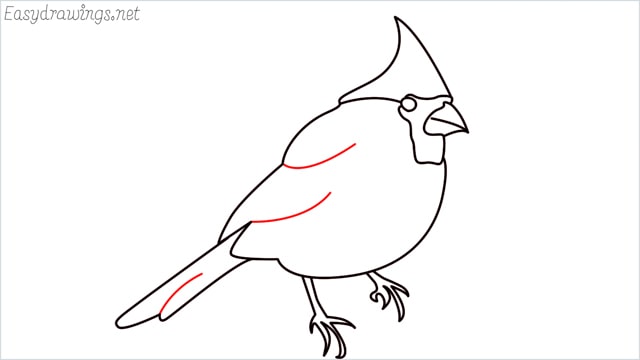

Around the middle of the seventeenth century instruments began to appear in the form of brass tubes wound into a single open hoop, with a flared exit opening (the bell). The earliest surviving horn of the tightly spiralled type, dating from about 1570, is by Valentin Springer, though it is described as early as 1511 by Sebastian Virdung. In German, the word "trumpet" was usually qualified by "Italian" or "hunting", to distinguish these coiled horns from the military or courtly trumpet, though spiral trumpets (sometimes called trombae brevae) pitched in D and played in clarino style also existed. The tightly coiled (or spiral) form of horn was never very popular in France, but both there and in Germany was usually called a "trumpet". Marin Mersenne calls these trompe, made in a crescent shape, and the cor à plusieurs tours, a tightly coiled instrument in spiral form. By the early 17th century, there were two main types of hunting horns, both designed to deal with the problem of providing a tube long enough to allow playing higher partials, while at the same time allowing the instruments to be played on horseback. Ĭrescent-shaped trompes and cors à plusieurs toursĮarly metal horns were less complex than modern horns. Very old metal instruments similar in form to both the lurer and the cornu, often also with ceremonial or military uses, are known on the Indian subcontinent by a variety of names: ramsinga, ransingha, sringa, ranasringa (Sanskrit for "war-horn"), kurudutu, and kombu. The latter name is the Latin word for "horn", and the source of the name of the musical instrument in many Romance languages: French cor, Italian corno, Provençal corn. The Etruscan name for them is unknown, but the Romans called them buccina and cornu. Depictions of these instruments are found from the 5th century BC onward on Etruscan funerary monuments. The lur was likely known to the Etruscans, noted as bronze-workers from the 8th century BC, who in turn were credited by the Romans with the invention of their horns and trumpets, including long curved horns in the form of a letter C or G. Because their makers left no written histories, their use and manner of playing is unknown. Many are in unison pairs, curved in opposite directions.

Nearly fifty of these curved bronze horns have been excavated from burial sites, mostly in Scandinavia, since the first was discovered in 1797. Metal instruments modelled on animal horns survive from as early as the 10th century BC, in the form of lurer (a modern name devised by archaeologists). A variant of the straight version is called tulnic. They are made in straight, hooked, and S-shaped forms, in lengths between 1.5 and 3 meters. Similar wooden instruments, used by shepherds for signalling, are known in Romania by the name bucium. The practice of making these instruments in different sizes, to be played together in part music, originated in 1826. The more familiar form, with an upturned bell, was developed in Switzerland in the eighteenth century.


Nevertheless, one modern authority says that at the time it was a straight instrument eleven feet long, and this form persisted in Austria until the nineteenth century. This description by the naturalist Conrad Gessner calls the instrument a lituus alpinus and says it is "nearly eleven feet long, made from two pieces of wood slightly curved and hollowed out, fitted together and skillfully bound with osiers". įrom late antiquity there are mentions of "alpine horns", but the earliest secure description of the wooden instrument now called an " alphorn" dates from the sixteenth century. In Europe they came to be symbols of royalty. Apparently of Asian origin, they reached Europe from Byzantium in the tenth or eleventh century, and are first mentioned in French literature in the early 12th century. The olifant or oliphant (an abbreviation of the French cor d'olifant/ oliphant, " elephant horn") was the name applied in the Middle Ages to ivory hunting or signalling horns made from elephants' tusks. The genus of animal-horn instruments to which the shofar belongs is called קרן ( keren) in Hebrew, qarnu in Akkadian, and κέρας ( keras) in Greek. This original usage survives in the shofar ( Hebrew: שופר), a ram's horn, which plays an important role in Jewish religious rituals. Cornicen (horn players) from Trajan's ColumnĪs the name indicates, people originally used to blow on the actual horns of animals before starting to emulate them in metal or other materials.


 0 kommentar(er)
0 kommentar(er)
